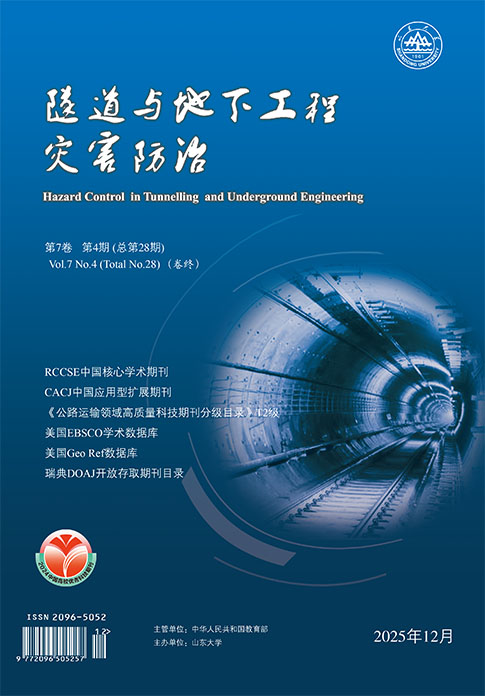
|
Editor-in-Chief: DU Yanliang
Executive Deputy Editor-in-Chief: LI Shucai
Sponsor: Shandong University
Published by: Shandong University Press Co., Ltd. |
|
|
|
|
|
|
The paper reviewed the experimental research progress of prefabricated drilling and high stress real-time drilling in analyzing the mechanism of drilling pressure relief(DPR)for preventing rockburst disasters from the perspectives of macroscopic(mechanical behavior characteristics, failure characteristics, energy evolution)and microscopic(crack evolution), a. . .
|
|
|
| Current Issue |
Archive |
Top Download |
Top Read |
|
|
|
2025
Vol.7
|
No.3
2025-09-20
pp.1-114
|
No.2
2025-06-20
pp.1-104
|
No.1
2025-03-20
pp.1-98
|
|
2024
Vol.6
|
No.4
2024-12-20
pp.1-98
|
No.3
2024-09-20
pp.1-102
|
No.2
2024-06-20
pp.1-112
|
No.1
2024-03-20
pp.1-104
|
|
2023
Vol.5
|
No.4
2023-12-20
pp.1-92
|
No.3
2023-09-20
pp.1-92
|
No.2
2023-06-20
pp.1-98
|
No.1
2023-03-20
pp.1-106
|
|
2022
Vol.4
|
No.4
2022-12-20
pp.1-106
|
No.3
2022-09-20
pp.1-114
|
No.2
2022-06-20
pp.1-106
|
No.1
2022-01-20
pp.1-102
|
|
2021
Vol.3
|
No.4
2021-12-20
pp.1-94
|
No.3
2021-09-10
pp.1-118
|
No.2
2021-06-20
pp.1-96
|
No.1
2021-03-20
pp.1-98
|
|
2020
Vol.2
|
No.4
2020-12-20
pp.1-94
|
No.3
2020-09-20
pp.1-106
|
No.2
2020-06-20
pp.1-96
|
No.1
2020-03-20
pp.1-110
|
|
2019
Vol.1
|
No.4
2019-12-20
pp.1-108
|
No.3
2019-09-20
pp.1-122
|
No.2
2019-06-20
pp.1-130
|
No.1
2019-01-20
pp.1-126
|
|
|
|
|
|